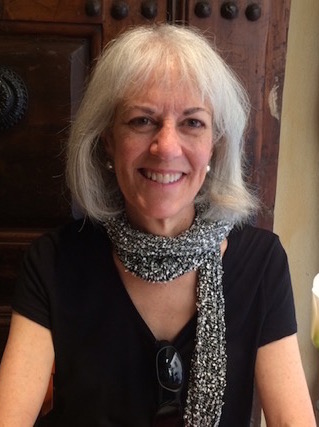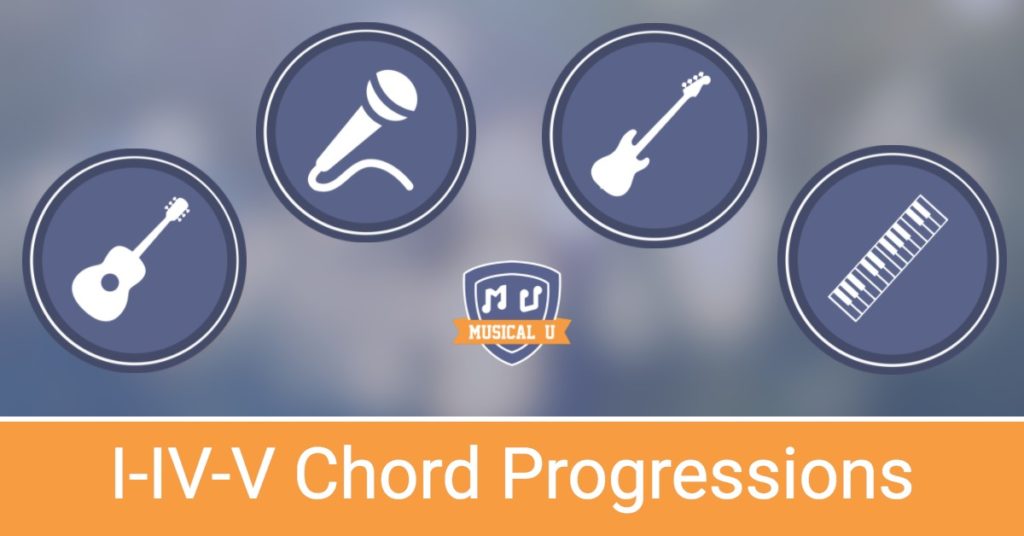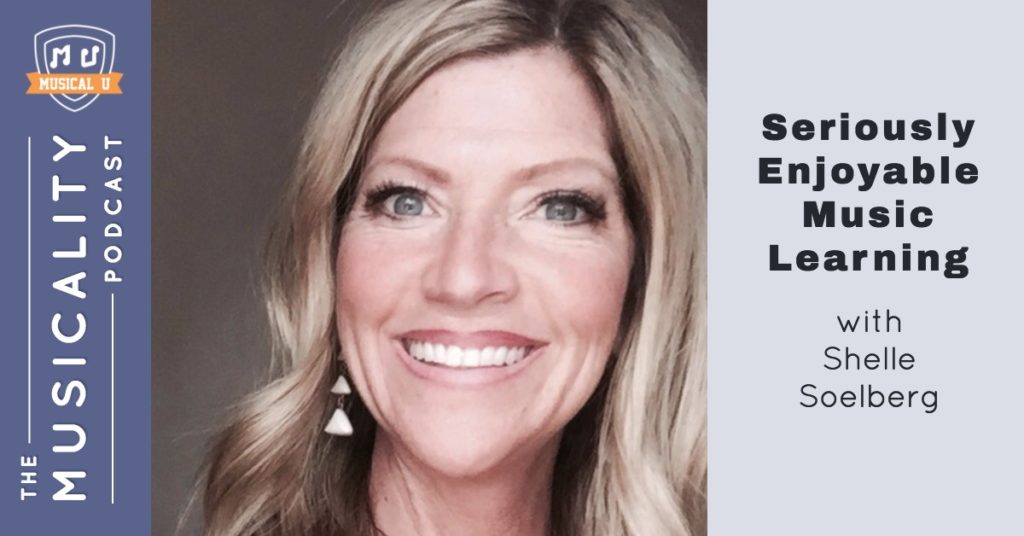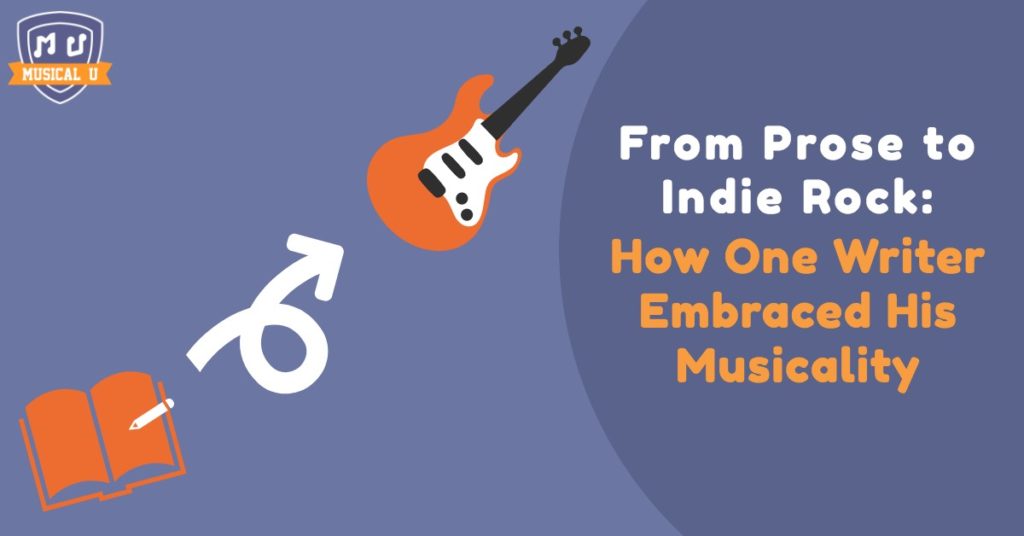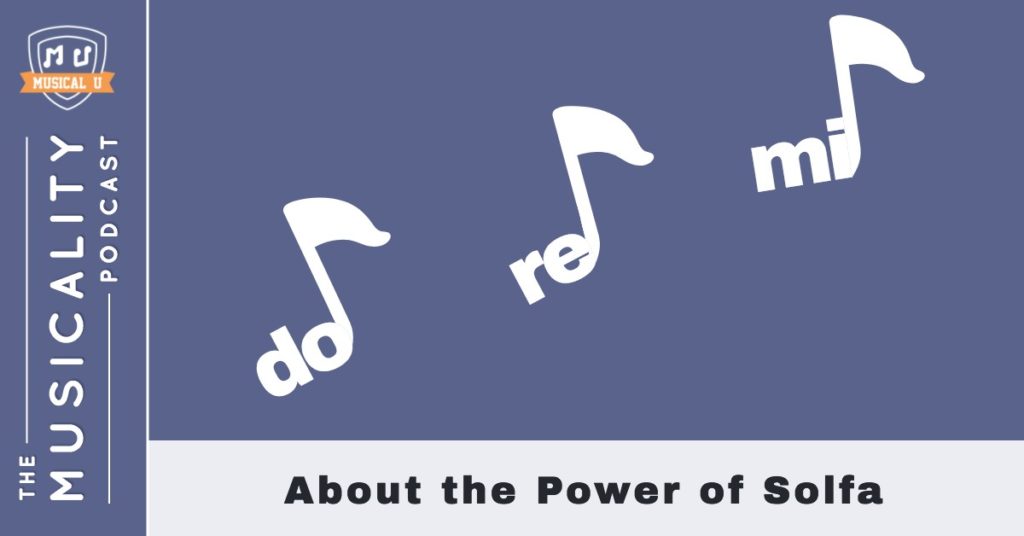As musicians we know the power of ear training to gain the instinctive feel for notes, chords and rhythms in music that can enable us to play by ear, write music, transcribe, improvise and more. But ear training can be a slow, hard process, right? What if it didn’t have to be… What if it could be a game?
In 2010 a new website appeared promising a range of ear training games… That website was Theta Music Trainer and over the last several years it’s gone from strength to strength. It now boasts a range of 50 ear training games covering a wide range of core topics including chords, rhythm, relative pitch, audio EQ, and more. The games are now available on iOS and Android as well as in your desktop web browser – and they’ve helped over 50,000 musicians worldwide.
Theta Music Trainer is something we’ve continually recommended since it launched, including to members of Musical U who find it’s a great addition to the training we provide.
Back in 2010 we interviewed Theta Music founder Steve Myers about the site and on the show today we catch up with Steve and learn more about Theta Music Trainer and how their ear training games have been helping musicians develop their core musicality.
In this episode you’ll learn about Steve’s own ear training journey and what made him see the potential for ear training games online.
He shares the surprising thing they learned about who it is that uses Theta Music Trainer the most – and how that’s actually different in their home country of Japan.
And Steve gives his top tips for getting started with ear training yourself.
Links and Resources
Enjoying The Musicality Podcast? Please support the show by rating and reviewing it!
Rate and Review!
Transcript
Christopher: Hi Steve, welcome and thank you for joining us on the show today.
Steve: Thanks Chris
Christopher: Let’s start out, if you don’t mind, with your own musical story. I’d love to hear about how you got started learning music.
Steve: Sure. I started playing guitar, when I was 11. I come from a guitar background. I learned to play mostly by … somebody would sit down with me and show me the song, the chords to the song. Or, I would go out and get the sheet music and learn like that. Basically, it was figuring out step-by-step where to put my fingers, the guitar being a fretted instrument. You can learn that way.
So I would learn songs like that. I didn’t really have a sense of what it meant to be able to play by ear or improvise or anything like that, until I started seeing people do that. I was just amazed every time I saw somebody who could improvise a solo on the spot. I was like, “what did you just play?” And they’d be like, “I don’t know.” “What do you mean you don’t know, you must have memorized it?” Their like, “No, no, I’m just jamming.” I was like “What does that mean just jamming?”
It was kind of like magic to me to watch people be able to improvise on the spot. I really wanted to be able to do that. From like the first time I saw someone. I received advice like, “Just use this scale. Here’s a pentatonic scale, just play with that.”
I would try that, but it didn’t sound like a solo. Didn’t sound very musical at all. So I kind of struggled along like that for quite a while. Eventually, I just figured “okay, this is just something I can’t do. This is a talent I don’t have.” So I just kind of resigned myself to continue to learn like chords and solos that I memorized. I continued to play music like that for quite a while.
Christopher: Its remarkable, I relate so much to that experience and I think so many people do. The way music is taught often leaves us in that situation of looking at someone who has freedom in what they play and how they play it. Assuming they have to have a gift or be talented. What I found most remarkable I think is how many of us persist never-the-less. We still learn, we still study year after year, even though a lot of us are thinking “I don’t have what it takes. Maybe I’m not a real musician.”
That’s certainly how I felt for a long time.
Steve: Yeah, same with me.
Christopher: Sounds like that wasn’t always the case. You did eventually have a change in mindset. How did that come about?
Steve: I basically continued from the time I was 11 until the end of high school. By the time I finished high school, I still played guitar the whole time, but like I said I’d kind of given up on the idea of being able to improvise. So I kind of put the guitar aside, just kinda played instruments that lay through university. But, while in University, I did that, I took a course in music theory and became even more confused by a lot of it. Also, it struck me as something I couldn’t really use because it was based on four-part writing and classical examples. It was … I couldn’t see how to apply it to the kind of music I was playing. So I put Music Theory in the same kind of category of “I just don’t get this.”
I finished University. I got a regular Job. I actually ended up coming over to Japan. Once I got a little bit of free time, I started picking up the guitar again and fiddling around with it. But, I was still kind of stuck. One day I was going through a guitar magazine and saw an ad for … The ad was set up in a way that it showed this guy who was trying to improvise but couldn’t.
So the problem is, he needs perfect pitch. If he had perfect pitch, then it would be no problem. He would be able to just play freely and express yourself anyway that you wanted. I thought, “This sounds like me, this guy looks just like me. What’s this perfect pitch stuff? Maybe that is what I need.”
I was sold on it. I sent off … It turned out to be a course of cassette tapes. A cassette tape based course. 50 tapes I think. It turned out that perfect pitch was actually a fairly minor part of the course. It was only toward the end, and a very small percentage.
The bulk of the course was on ear training. It was ear training and on Music Theory. But, it was Music Theory presented in a way that you could actually apply it to your playing.
From that, I was able to start piecing … putting, you know … the pieces from the puzzle started falling into place with that course.
I got introduced to the idea of patterns in music. For example. How chords are constructed. For example I was confused as to what … why is a seventh chord called a seventh chord? What is it about a minor seventh and major seventh. What exactly is the difference.
So, one of the things this course was not only help you to recognize the sound of those individual chords, but to understand they’re constructed. The pattern by which each one … each type of chord is made.
By the end of that course, which took me well over a year to work through. It was also pretty tedious. It took a lot of self-discipline to sit down with it every day. It really reignited my desire to learn to improvise again. By the end of it, I was able to recognize the sounds of certain chords. One, for, five and one. Be able to take some of these patterns that I’d learned and move them across keys. That was a big eye opener. That was one of those ah-ha moments where you say “Hey, okay, this is starting to make sense now.” I’d say that was the biggest thing for me. By the end of that I realized this ear training, is a … this is a big thing. It was more about relative pitch and recognizing patterns in music.
Christopher: That’s really interesting, and I think it’s an important point to make clear for our listeners. For a lot of people when they think about playing by ear or improvising or they hear about ear training, they assume it is about perfect pitch. Can you recognize the “A” note out of nowhere? A lot of our work at Musical U is often explaining actually the skills you want, they’re much more about relative pitch. It’s about figuring out the notes you’re hearing and their relationships to one another, similarly for chords. It sounds like that was the core of the course that you found so useful.
Steve: Absolutely, yeah, it was completely relative pitch. I remember after that, later on meeting many accomplished musicians, professional musicians. I was actually surprised at how few have perfect pitch, being able to recognize the tone without any reference right out of the blue.
At the same time being impressed by the fact that nearly 100% of them had very good relative pitch.
Christopher: So, once you had that breakthrough and you had done this training course for a year or so. What impact did that have on your musical life? How did it change your relationship to the guitar or to learning music?
Steve: The first thing was. For the first time, it started out in little spurts and fits, when I was playing by myself, just using a backing track. I was finally able to come up with some decent sounding improvised solos and to take some of the patterns I learned and move them across different keys, different feels and things like that.
It really opened up the idea of being able to take a, for example a phrase or a pattern or something and be able to use it in different contexts. Began to understand how some of these phrases fit, how people came up with them. How they actually related to the chords that we’re played over them.
That was the first thing. I remember some very exciting times “Okay, I’m starting to get this.”
Then, I would play with friends or in a session or something. I would find that, a lot of these great breakthroughs that I had playing by myself suddenly were, I wasn’t able to do it in a live situation.
So, that was my first experience with being able to take something from the practice room and into a live situation where you’re playing with other people.
After that, that’s a process that’s continued to this day. Is realize you do it over and over and over on your own. And, little by little it comes out when you’re playing live. It might just be a little phrase here that comes out when you’re feeling a little adventurous. But, over time that becomes a lot easier and then those phrases start to come out in live situations as easily as they used to when you’re playing by yourself.
Christopher: It’s a whole other transformation, as it were. To be able to do this stuff live, not just when you’re sitting in your bedroom alone, practicing diligently. I think this is an important point to talk about because on this show, we love to share examples of people having these insights and realizing what they thought was a talent or a gift, actually is learnable. At the same time, I don’t want to oversimplify or under … to have people underestimate the amount of work involved to do the ear training was a year or more and then you were still just getting the hang of it in the practice room. And, even once you got the hang of it in the practice room it was another step to go out on stage and perform. I think you are not a rare case in that aspect. That is normal. That is the process. Even when you have these tools to accelerate the process, you do have to work hard day after day and keep working to improve.
How did all of this come to you actually starting Theta Music and developing the Theta Music Trainer?
Steve: Why? So, after University, I went into software development. In the course of that, I came across certain educational type software. Especially games that have some kind of educational or training component. When I saw those, after … At some point I realized, “Hey, this would be a great application for ear training.” Thinking back on the experience I had with the 50 cassette tapes and the year of working through those day after day. Just the fact that those exercises were fixed. I would do them so many times that I’d pretty much memorized the order of the answers, things like that.
These kinds of games … I started thinking, “This would be good to set up some kind of ear training site or program that’s based around games and to inject some kind of element of fun. Fun … Put a little bit of fun and excitement in this process. Especially in a way that people could do bits at a time. 15 minutes here. You’ve got a little free time, jump in, play a game or two.
You don’t necessarily have to do it too diligently or too seriously because these are skills that you can actually kind of develop in the background over time. Once you get a little bit of a base in place, you can continue to develop these skills without having to focus hours at a time every day.
That was basically the impetus for starting Theta Music Trainer was to set up some games where you could learn these skills of relative pitch and musical theory concepts that you could apply to your playing.
Christopher: I identify so much with that. Similarly, a technologically minded person who experienced the traditional way of doing ear training. That was very much what led me to start our company. I think you were really forward thinking and cutting edge because Theta Music launched in 2010. Now we’re maybe a bit more used to the idea of educational games and bite sized training. Sites like Duolinguo trying to gameify learning.
But, in 2010, that was really very innovative and you’ve continued to innovate since then. I think you’ve had great success, I think your users would agree, in making it fun and exciting to go through this process of ear training.
Steve: It’s a constant work-in-progress, trying to keep it interesting.
Christopher: I think that the comment I most hear from Musical U members who also use Theta Music games. I often hear that they just really enjoy them. That’s something that definitely sets you guys apart, that they feel like they can go over, play some of those games. They know they’re learning something, and it doesn’t have to feel like, “Now, I’m going to sit down and study for 20 minutes.”
Steve: Alright, that’s good to hear.
Christopher: So, tell me what kinds of people are using Theta Music Trainer?
Steve: Essentially, when we developed it initially we thought our market was going to be mainly individual users. I had myself as one of the target audience for Theta Music Trainer.
But, after we launched we started getting requests from teachers. Teachers in public schools, including band directors and choir directors. I also … private music teachers with their own studios, things like that.
They were asking if we had some kind of plan for classrooms or some kind of school plan or something like that. Of course, we didn’t at the time. So, that was the very first edition to the system as a whole, was in response to those requests. That came in the very first year. Almost right away after putting that into place and starting to make it more classroom friendly, we started seeing this shift. It made sense when we thought about it.
Basically, being game based and without a lot of explanatory material on our site you kinda need a teacher or somebody to help guide you through.
They were especially good for cases … For example if you have a band director and they have students that need help with tuning. You get cases where there are students that really can’t quite distinguish whether one note is higher or lower than another. It’s a very basic thing, basic pitch discrimination skills like that.
Being able to match pitch from choir directors, things like that. Just start at the very beginning. The games are good when you have students with … most things are fine, but there’s one thing they need a little extra work in. The teachers are able to assign the right game for the right student in that situation.
So, to answer your question, this has become more and more over the years as our audience is really schools, and private music students, and the teachers and their students.
Christopher: That’s fascinating, and I think it’s a real testament to the quality of the games and their … the breadth of games you have, as well as their usefulness that it has become such a go to tool for music teachers across the US, I’m sure and presumably in other countries as well.
Steve: Us, Europe, Australia is the main ones for the schools.
Christopher: So, with Musical U members, one thing we found can be a real struggle for them, particularly for the adults is, it can be hard for them to find time for ear training and that’s usually when they’re very focused on their instrument or repertoire or passing an exam. Finding an extra 15 minutes in the day to sit down and do some ear training can be quite tough.
A couple of the techniques we recommend are to do quick, mini sessions throughout the day when you have just a few minutes to spare. Or, finding ways to practice on the go, whether they’re waiting for a bus or standing in a queue, that kind of thing.
I was so excited a few years ago to see you bring Theta Music Trainer to mobile with iOS and Android. Was that part of the motivation? Or, what brought you … cause it was an enormous effort I’m sure to port these web based games to those two platforms. What was the driver there?
Steve: Right, well that was … So, after getting it more school friendly, teacher friendly, the number one request after that was, “Can we make an app for it?” It was at that point we’re starting to realize that was part of the plan that wasn’t so cutting edge, was we didn’t really have mobile in mind at the time that we started. The actual development for this started back in 2008, 2009, something like that. It was a bit of an uphill to struggle port it to mobile. In fact, I don’t think we can say it was really all in place and all stable until last year.
Christopher: Wow.
Steve: It was a pretty big process, but the motivation was, as you said, people requesting it. The reason being especially in Japan and places where people we’re on the trains commuting, things like that. They’ve got 10, 15 minutes and they’ve got their phone or tablet. They can spend some time doing ear training. That was the main reason we did it.
Christopher: Fantastic. It’s such a great resource for people now, if they’re training, the Theta Music Trainer. To know they can pick it up and go. Like you touched on earlier, these are skills that really benefit from a little. And, often it’s not the case that you need to sit down for three hours and bash away at it. Once you’re up and running, a little here or a little there can go a really long way.
Steve: Right. I think that’s just a good approach for music learning in general. A lot of people, and I was certainly one of them, you tend to want to really get into it and spend hours and hours at a time. Then, get frustrated and then lay off for a long time. That tends to be a lot less effective than just doing a little 15, 20 minutes a day, but consistently.
Christopher: Absolutely. So, you’ve had, I believe, over 50,000 people use Theta Music Trainer over the last several years. What have you learned along the way? Has anything surprised you about the way people have used it? What’s worked really well? Anything from those many thousands of users?
Steve: Right. I think the things that have worked well, most of the games that are used the most, have to do with fairly basic skills. That’s just one thing that we’ve learned.
Like I was talking about earlier, pitch discrimination, tuning, keeping the beat, even things like basic music reading skills, learning notes, notes of the clef, things like that, that aren’t really ear training per se, but are skills that if you’re a beginning band student you might need.
The other thing that has struck us over the years is that thing that you need varies greatly from person to person. Trying to come up with a one-size-fits-all program or even advice is very difficult.
So, I guess we’ve been struck by how some games are really useful for certain people and not touched by other people. How that differs so widely from person to person. Different music teachers have their own approach. They’ll use the games in their own way and it’s completely different from another teacher.
The variety of requests that come in for people like … “Can you make a game that does this? A game that does that?” And how different those are I think has been one of the big eye openers that we’ve encountered over the years.
Christopher: That’s really interesting. I think we’ve experienced similar things at Musical U and I guess in a way its natural with the incredible breadth of music and the musical universe. We know that there are umpteen different types of musician and everyone is unique and different. Even knowing that, it was a shock how versatile we had to make Musical U in order for any musician to come in and find the things that were relevant and useful and interesting to them and assemble it in a coherent way. It’s definitely a challenge.
Steve: I think its amazing what you’ve done with that. It’s such a difficult thing to do. Congratulations on it.
Christopher: Well, as you said, it’s a work in progress! Continually trying work on that one. So, Theta Music Trainer is also available in Japanese. You and your team are all based in Japan. Does the traditional music education system there differ much from the U.K. or U.S. system. Do you find people are using Theta Music Trainer differently in Japan than in the rest of the world?
Steve: Yeah, very differently. In fact, everything that I just said about the trainer being geared more toward teachers and studios and things like that, doesn’t really apply to Japan. At least, it hasn’t so far. That’s primarily because the music curriculum here, especially in public schools … First of all its very good. Every student that goes to the public school system here comes out with a really sound music education. What I mean by that is that they have the basics when they finish middle school. They’re able to sing in tune and keep a beat; basic rhythmic, harmonic and especially melodic and singing skills.
There’s a lot of singing by yourself that students have to do. They’re given a song and they have to sing it without any accompaniment, in tune and in time and things like that. They are graded on them.
For example, they don’t teach things like improvisation or ear training per se, music theory per se. It’s not part of the curriculum. But, those basic skills, the foundation that you need to build on from there, is in place.
The way that they teach that is quite different in Japan. It’s a fixed-do type system. So it doesn’t lend itself very well to a lot of the things that the Trainer does.
What we’ve found in Japan, is that though its not such a great fit for the public schools, it has turned out to be a great fit for adult learners here.
Amateur musicians or even pros and semi-professional musicians that just want to work on, for example their ability to recognize chord progressions. Or, brush up on music theory even or start to learn music theory or the way its taught in the West.
We get a lot of individual, amateur adult users from Japan that use the Trainer in that way. The level of engagement also seems to be quite high. Some of them will just really, really get into it and shoot strictly every level of every game over the course of a few months.
We also get a lot of older learners in Japan. Japan, having a relatively high elderly percentage of the population that’s retired and has time on their hands. A lot of these people are getting back into music, so they’re finding resources online. There’s really not nearly as much available online in Japanese as there is in English. In that sense, we tend to be the first service that a lot of them find.
Basically, to answer your question, I think the thing that’s different in Japan is we’re less school oriented and more individual oriented.
Christopher: That’s great. I’m so glad I asked, because while it’s wonderful you’ve had such success with the schools in the U.S., I’ve always felt like Theta Music Trainer a wonderful tool for the adult musician. Musical U has been eye opening to realize how many of our members are actually a bit later in life, a lot of them coming to it in retirement. So, I’m glad I asked and had the opportunity to have you say that actually these games are fantastic for adults too and they are fantastic, even if you are a bit later in life, it’s not too late to learn these skills. I know a lot of people have anxiety that they’re past the point of developing their ears in that way when in reality its just not the case.
Steve: Right. Originally, we had developed them for adult learners. I think the reason it hasn’t been such a great fit for adult learners in the U.S. is they require a little bit of guidance. As I mentioned, in Japan, by the time you’re an adult, most of the population, the vast majority of the population has a fairly high degree of music ability. So, the base is already there. In the States, you’ll get people approaching an instrument for the first time and they’ve not had the basic music training. They really do have some trouble, say maybe matching pitch with your voice, or being able to discriminate between pitches and things like that.
So, you kind of have to start at a different place for each person. It usually takes a teacher or somebody that is working with the individual and can see, “Okay, you know what? He needs to start here. You need to back up a little bit and work on this skill.”
At the same time, you’re practicing your instrument, because when you come back to music as an adult, or even if you’re doing it for the first time later in life, the first thing you want to be able to do is play something.
The ear training, even though its really important and vital, is something you can do in the background while you’re practicing your basic instrument skill.
So, a teacher will be able to focus on that instrument skill and as an aside say, “Well, why don’t you just paly this game for a week or two?” And, that will help your tuning ability or your ability to understand how chords work. Whatever it is that particular individual might need.
Christopher: So, we’ve heard a little bit about how Theta Music Trainer from being aimed at the individual, more toward schools, to building up this enormous range of 50 different games and taking it to iOS and Android, so that people can use it on the go. It’s been an incredible journey to watch so far, and really exciting the way you’ve continued to develop, and improve, and innovate. I’d love if you could just share a little bit about what the future holds, how are plans developing for the future of Theta Music Trainer?
Steve: Sure. Well, what were … Our main focus right now is getting it easier to use for people that are just coming to it. Although I think for a while, it’s still going to be of more benefit to people if they have some guidance, a teacher.
What we are working on is a first step towards saying, “What is it that you want to be able to do?” First of all.
Let’s say, a person wants to be able to hear a song and be able to play it, be able to work out the chords, or something like that. What are the things you want to be able to do with music? And, from that, set up an automated playlist of games for them.
Right now, we call them courses, they’re not really courses in the sense of … they teach you lots of informative content. But, they do take you on segmented or sequential process with a game that is appropriate for the skill you want to develop.
We’re not there yet. That’s gonna be what you see coming out over the next several months. Hopefully, by the time we get to the beginning of next year, that should be in place.
Starting form next year onward, our main focus is getting back to developing more games that address more musical skills, because they’re still huge, gaping holes. I guess we were talking about what’s another thing that we’ve learned over the years it’s that this is a huge massive area, ear training and music theory. With all these different needs and requests from people that are using the program, we quickly filled up plans for the next 50 days already.
That’s going to be what we work on, going forward from 2018 on.
Christopher: Fantastic, well, I know that a lot of our listeners who have used Theta Music Trainer before are going to be very excited to hear that’s on the development road map. More games and more easier to use, more flexibility about picking those games. That sounds like a recipe for success.
Steve: Right, hope so.
Christopher: So, Steve, thank you again for joining us today. Before we wrap up, do you have any parting words of advice for the listener who may be is feeling a bit like you did in the early days. They’ve been studying an instrument, but they’re not really feeling like those guys up on stage who can just jam, or wail or bust out a solo on a moments notice. What advice would you have for them getting into this world of ear training?
Steve: First, I would say, don’t give up on it. There’s such a tendency, my kids will say, “It’s not for me.” You kind of set the instrument aside for a while, even though you really do want to do it. You think “I just can’t.” It falls by the wayside. Especially, I imagine its true of most instruments, but especially with guitar, the statistics is 80% of guitars that are sold aren’t played after the first few months. So they just kind of sit in rooms and attics and things like that.
My first bit of advice is just keep playing. Even if you’re not ready to improvise, just play whatever you can play. Then, wade into it gradually. Obviously a lot of those blocks with people in those cases are internal. It has to do with musicality. So start wading into these skills that are related to musicality. Find the ones that resonate with you the most. I think you have a great list of them in the Musical U course materials.
Basically, look at that list and say, “Okay, I’ll start with this one, this one, this one.” Just, start taking baby steps, but do something to kind of get started in that direction.
Christopher: Terrific, and if they’re curious to try out Theta Music Trainer as part of that immersion into the world of ear training, what recommendations would you have for them?
Steve: It’s a really hard thing with any music trainer, because it so much depends on what it is in particular they’re trying to develop and we yet have that in place. But, the ones that I’ve found have most, in general, have most applicability most of the time are the ones that relate to pitch. So, if you go to Theta Music Trainer and go to the “Pitch” category, that’s usually a good starting place for a lot of people. And then if you find, “that’s pretty easy, I got this.” Then just move onto the next category on the list until you find something that matches whatever particular skill it is you’re trying to develop.
Christopher: I think that’s great advice and I’m sure a lot of our audience will be headed over there now to give it a try. Thank you again, so much Steve for taking the time to be with us today.
Steve: Thank you Christopher. It was a pleasure.
The post Making Ear Training a Game, with Steve Myers appeared first on Musical U.
 3. Teachers
3. Teachers Preparing for auditions is akin to training for a marathon. It takes a great deal of practice as well as careful selection of repertoire that fulfills each school’s requirements. Private teachers with a track record of helping students audition successfully are an asset to any music school applicant.
Preparing for auditions is akin to training for a marathon. It takes a great deal of practice as well as careful selection of repertoire that fulfills each school’s requirements. Private teachers with a track record of helping students audition successfully are an asset to any music school applicant.